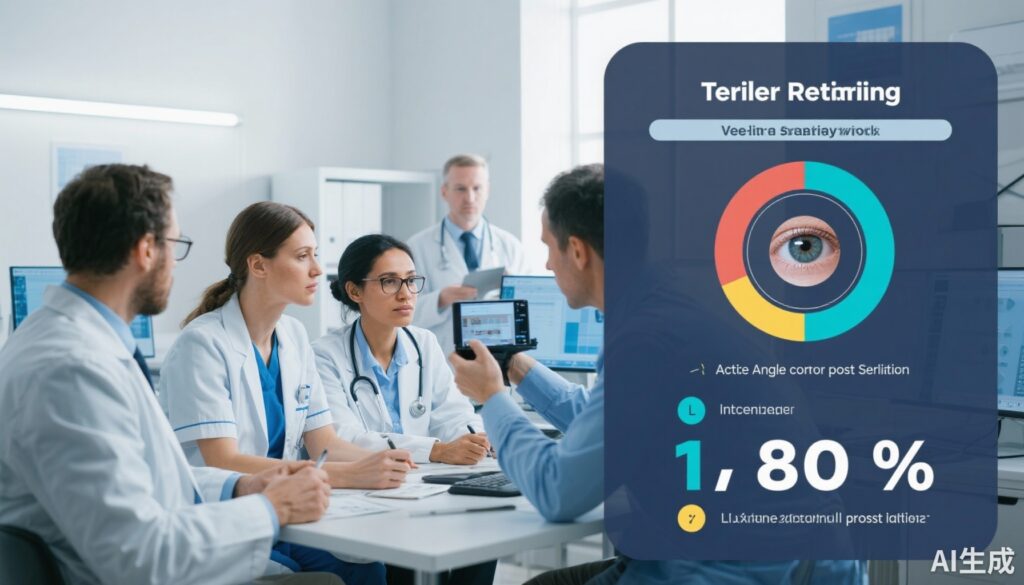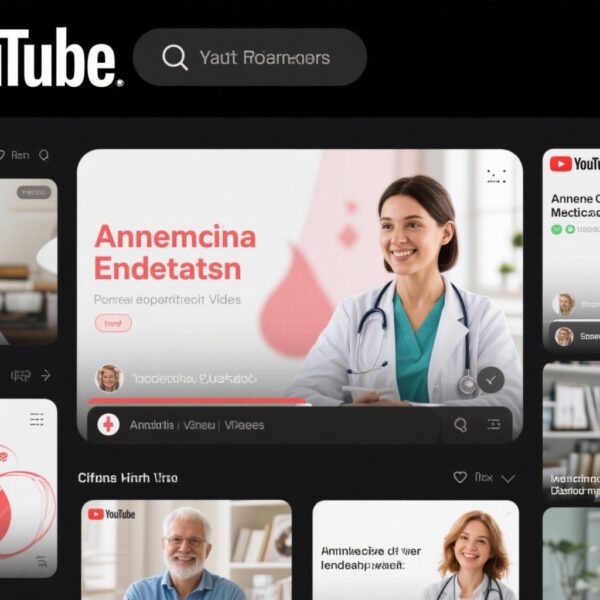Highlights
- Pharmacologic pupillary dilation in large-scale teleretinal diabetic retinopathy screening programs carries an extremely low risk of triggering acute angle closure (AAC), with incidence rates less than 1 in 40,000 dilations.
- Manual review of International Classification of Diseases (ICD) codes for AAC demonstrates high fidelity in case identification within electronic health record systems.
- All confirmed AAC cases post-dilation occurred in female patients with predisposing risk factors such as anatomically narrow angles, underscoring the value of targeted risk assessment.
- Findings advocate reconsideration of AAC risk as a contraindication to routine dilation in safety net populations, facilitating better screening uptake and earlier detection of retinal disease.
Background
Pharmacologic pupillary dilation is a cornerstone of comprehensive ophthalmic evaluation, enabling enhanced visualization of the retina and optic nerve head. Its pivotal role in diabetic retinopathy screening is well-recognized, particularly in telemedicine-facilitated retinal imaging, which expands access to underserved populations. However, concerns exist about dilation-induced precipitations of acute angle closure (AAC), a potentially vision-threatening emergency characterized by rapid intraocular pressure elevation due to compromised aqueous humor outflow.
Historically, AAC has been considered a contraindication to routine dilation, especially in patients with narrow anterior chamber angles. This concern often limits widespread implementation of dilation protocols in community-based screening, particularly within safety net healthcare systems comprising racially and ethnically diverse patients with varying ocular anatomy. The consequent underdilation may hinder early detection of sight-threatening retinal conditions.
This landscape underscores the need for robust evidence quantifying AAC risk post dilation and validating reliable case identification methods such as ICD coding within large health registries.
Key Content
Study Overview and Methodology
Lang et al. conducted a large retrospective cohort study leveraging data from the Los Angeles County Department of Health Services’ teleretinal diabetic retinopathy screening (TDRS) program spanning over a decade (August 2013 – March 2024). The study population encompassed 84,008 adult patients undergoing 168,796 pharmacologic dilations using tropicamide (0.5% or 1.0%). The safety net setting reflects a racially and socioeconomically diverse cohort reflective of real-world screening challenges.
AAC case ascertainment combined automated identification of ICD codes relevant to angle closure (including AAC glaucoma and anatomical narrow angle) within three months of dilation, with manual chart review confirming clinical presentations and treatments indicative of true AAC events. Integration of emergency visit, urgent care, and specialized ophthalmic procedural codes (iridectomy/iridotomy, lens extraction) within a critical follow-up window enhanced sensitivity of AAC detection.
Incidence of AAC Post-Dilation
Among the cohort, only 4 confirmed AAC incidents occurred post dilation, translating to an incidence of 2.4 per 100,000 dilations (0.002%) or 4.8 per 100,000 patients (0.005%). Notably, all four cases presented acutely within 24 hours of dilation with classic symptoms including ocular pain and blurred vision, and were exclusively female with documented narrow angles in the fellow eye on gonioscopy.
This exceptionally low incidence corroborates prior smaller-scale studies and meta-analyses reporting AAC risk after dilation ranging from 0.01% to 0.03%, though direct comparisons are limited due to heterogeneity in populations and methodologies.
Reliability of ICD Coding for AAC Identification
The study demonstrated that ICD codes alone may overestimate AAC incidence due to miscoding or inclusion of anatomical narrow angles without acute closure. However, when supplemented with manual record validation and procedural coding, combined methodology affords a reliable and scalable modality for surveillance in large clinical databases and registry-based research.
Pathophysiological and Risk Considerations
AAC typically results from pupillary block in eyes with predisposing anatomic narrow angles aggravated by dilation-induced iris configuration changes. The exclusive identification of female patients among AAC cases aligns with known epidemiology, reflecting anatomical predispositions such as shallower anterior chambers and smaller eyes.
These findings emphasize the importance of risk stratification perhaps through pre-screening gonioscopy or anterior segment imaging to identify susceptible individuals before dilation.
Expert Commentary
Lang et al.’s large-scale, rigorous investigation addresses a crucial clinical dilemma balancing the imperative of comprehensive retinal screening against the rare but feared complication of AAC. The study’s strength lies in its extensive population base, long-term follow-up, diverse ethnic representation, and innovative approach corroborating administrative coding with clinical details.
The very low AAC incidence supports a policy shift away from absolute contraindications to pharmacologic dilation in broad screening contexts. This could improve screening rates and earlier diabetic retinopathy detection, pivotal in curtailing vision loss, especially in underserved populations.
However, the study also highlights key areas. Given all AAC cases had narrow angles in the fellow eye, targeted evaluation of ocular anatomy before dilation could further mitigate rare risks. Integration of anterior segment imaging technologies such as Optical Coherence Tomography (OCT) or ultrasound biomicroscopy could inform individualized risk-benefit assessments.
Future clinical guidelines may incorporate AAC risk stratification algorithms rather than blanket avoidance of dilation, enhancing screening accuracy and patient safety. Additionally, continued refinement of electronic health record coding and procedural surveillance will be critical to epidemiological monitoring.
Conclusion
Pharmacologic pupillary dilation in a high-volume, countywide safety net teleretinal screening program poses an exceedingly low risk of acute angle closure, supporting its continued use as a safe, vital screening tool.
This evidence advocates revisiting current clinical hesitance to dilate patients during diabetic retinopathy screening, especially in diverse populations that stand to benefit most from early retinal disease detection.
Ophthalmic practitioners and health systems should consider targeted anatomical risk assessments while maintaining dilation protocols to optimize screening quality and patient outcomes.
References
- Lang TZ, Xu BY, Li Z, Iyengar S, Kesselman C, Ambite JL, Bolo K, Do J, Wong B, Daskivich LP. Acute Angle Closure Incidence in a Large Countywide Safety Net Teleretinal Screening Program. JAMA Ophthalmol. 2025 Sep 18:e253162. doi: 10.1001/jamaophthalmol.2025.3162. Epub ahead of print. PMID: 40965900; PMCID: PMC12447281.
- Quigley HA. Angle-closure glaucoma–simplified understanding. J Glaucoma. 2007;16(6):548-554. doi:10.1097/IJG.0b013e318111c90b. PMID: 18043155.
- Venkatesh R, Choudhari NS, Radhamani M, Raja SC. Laser peripheral iridotomy in primary angle closure: long-term follow-up and prognostic factors. J Glaucoma. 2006;15(2): 158-163. doi:10.1097/01.ijg.0000198330.91853.58. PMID: 16547430.
- American Academy of Ophthalmology. Primary Angle Closure Preferred Practice Pattern®. San Francisco, CA: AAO; 2021.



